By Louis Sclafani
There are a number of types of aerials available to firefighters today. One of the biggest things to consider when ordering a new truck is how the aerial device should be mounted—rear-mount or midmount?
Then, on the fireground, there are a few operational differences between the two that firefighters should be aware of. Here, we will compare rear-mounts with midmounts.
- The Aerial “Truck”: Ladders vs. Platforms
- Five Common Misunderstandings About Aerial Apparatus
- Conducting a Fire Apparatus Fleet Evaluation
REAR-MOUNTS
The most popular mounting option is the rear-mount. By far, there are more rear-mount aerials out there than midmounts. One of the biggest reasons for this is economic because rear-mounts are less expensive than midmounts. The difference between the two can be $100,000 or more. That alone can be a major factor when making a purchasing decision.
Rear-mounts tend to have fewer ladder sections than midmounts. We typically see three sections for most rear-mounted ladders and platforms. The good news about having fewer sections means the truck has a lower gross vehicle weight (GVW). If you can save weight here, you can have less wear and tear on brakes and tires, providing an economic savings. On the other hand, if your GVW is still lower than what the truck is rated for (GVWR), then you have room (weight) to spare if you want to add extra equipment onto the truck.
Rear-mount aerials tend to have a higher travel height. This is becasue the device itself lays across the top cab of the truck. If you have height restrictions in your area, be it your fire station, an overpass, or even a building overhang, then a higher truck could be a problem.
Not only do rear-mounts have a higher travel height, but they tend to be longer as well. This is again because of the ladder extending over and out in front of the cab. There are many smaller firehouses across the country where the bay door may be too low, or the apparatus storage area may be too short for a rear-mount to fit.
If purchasing a truck, all of the above are things you may want to consider beforehand. If you have that rear-mount already, let’s discuss some of the operational issues.
Since rear-mounts are longer in overall length, they may be less maneuverable on a crowded fire scene, preventing them from taking the best spot. Consider a strip store fire. You have taken a position in front of the building. You have positioned yourself to go to the roof if needed. Then the incident commander (IC) declares that this a defensive firefight. Rather than raising your aerial up high and setting up an elevated master stream, the IC asks you to do a low-level attack with your master stream right in the front windows of the store. With the longer boom of a rear-mount, it may be difficult to rotate the device to the desired angle if you are too close to the building. So, with rear-mounts, you typically need to set up a little farther from the building.
Maybe one of the biggest concerns I hear from firefighters who operate rear-mounts is the overhang in front. Most say that when they first get behind the wheel, it is strange and uncomfortable to see the ladder or, worse yet, the platform hanging over the front of the truck, blocking part of their view. Drivers are constantly looking at the top of their windshields to make sure they don’t hit anything. Interestingly, in my area we have plenty of trees that extend over the road. Upon inspecting a rear-mount platform, I have found leaves, twigs, and branches inside the platform numerous times. It’s not uncommon to see the front of the platform, or the master stream device, with marks indicating they struck small limbs while driving down the road. Luckily, I am not aware of any in my area that sustained major damage to the platform. However, there are a number of photos on the Internet showing when they weren’t so lucky after hitting low-hanging objects.
When given a strategic objective such as rescuing a victim from a window, the driver will want to line up the truck in the best spot possible. Typically, this means lining up your turntable with your objective—in this case, the window. Given the space and the time, I always teach my students to take the best spot available to them, not just one that is close enough or in the area. Take the BEST spot available. From the driver’s seat, it is harder to line up the turntable with your objective when the turntable is all the way in the back of the truck. Perhaps some of us have better depth perception than others.
Finally, when it comes to below-grade operations, rear-mounts have a major advantage. Today, most all aerials can operate at an angle of negative degrees. Of course, some trucks can go lower than others. At least one manufacturer states its device can go to –200. The issue is that rear-mounts can typically maintain their low-level operation on both sides of the truck as well as the rear, where midmounts can only do it off the side of the truck.
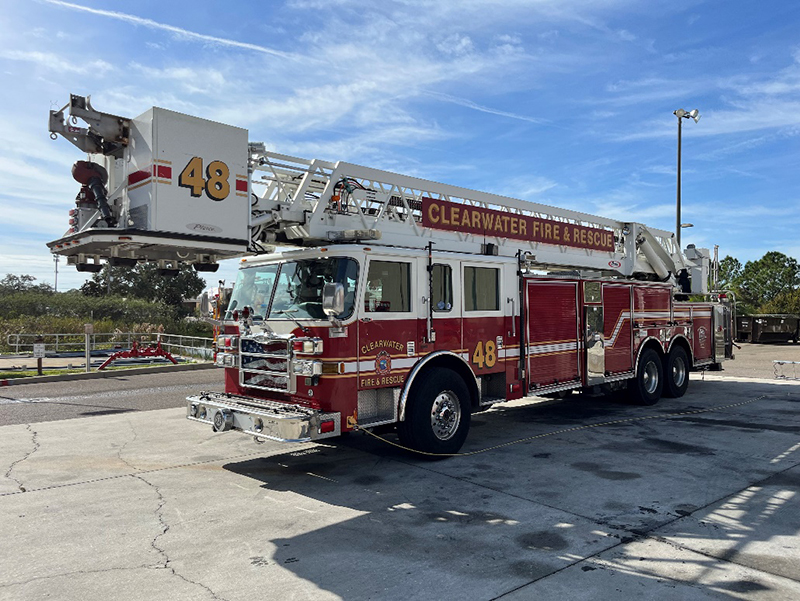
1 Rear-mounts can have considerable overhang off the front of a truck, possibly blocking the driver’s view. (Photos by author.)
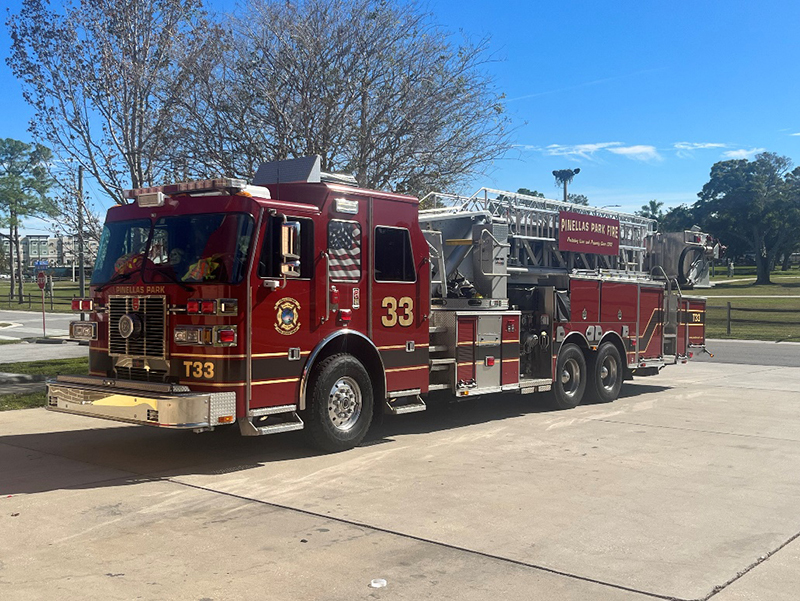
2 Midmounts have no overhang over the front, allowing the driver an unobstructed view.
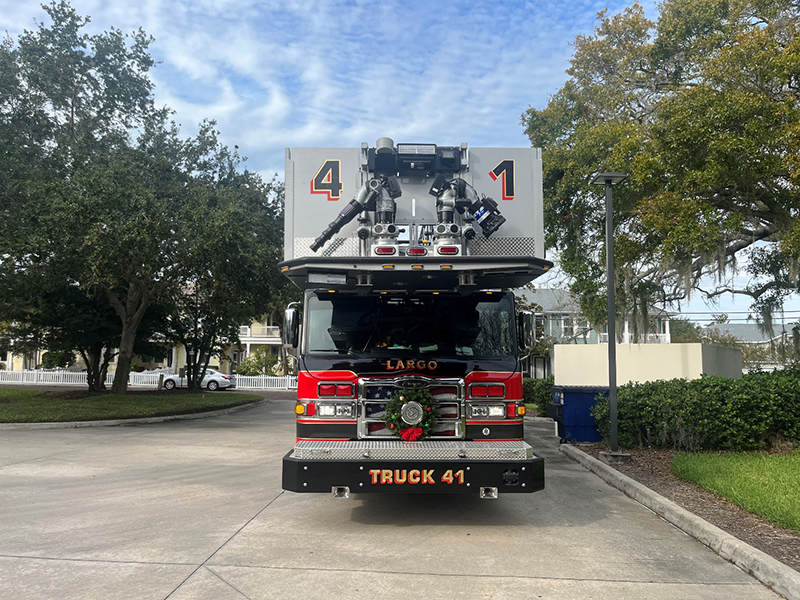
3 A rear-mount platform sits the highest of all devices and can snag branches or limbs that hang over the road.
Rear-Mounts
|
Midmounts
|
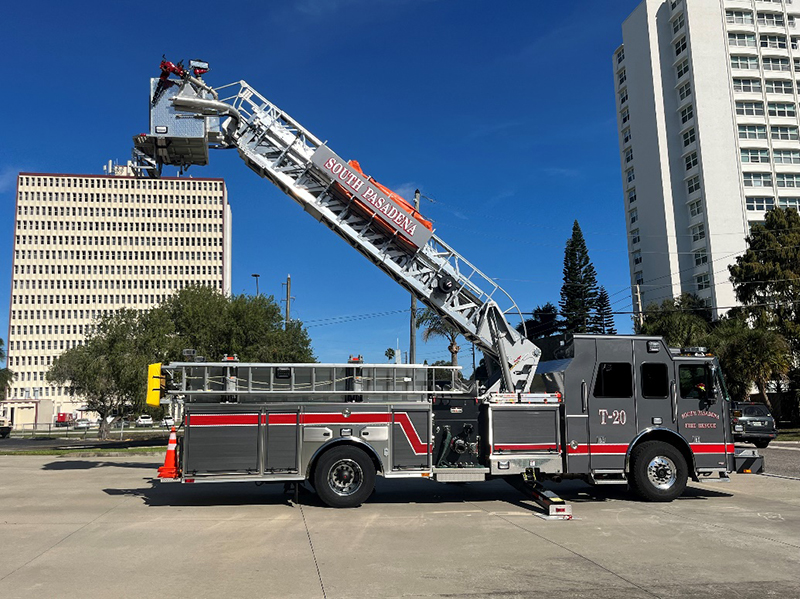
4 For maximum reach, midmounts need to deploy their devices off the side of the truck. Deploying over the front or rear will reduce their reach, requiring you to position closer to your target.
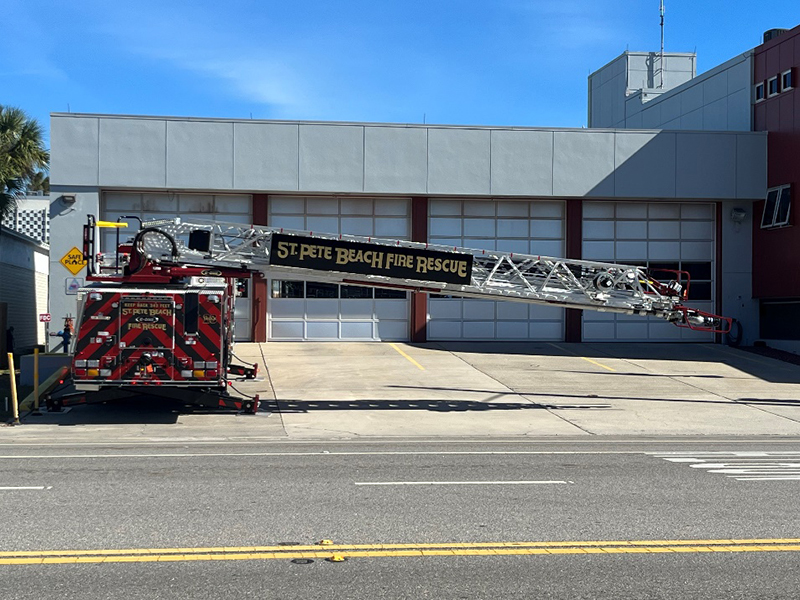
5 Rear-mounts can go below grade off both sides and the rear. Midmounts can only go below grade off the sides.
MIDMOUNTS
Midmounts can cost $100,000 or more than rear-mounts. But, they are also shorter in height and travel length. If you have height restrictions you have to work with, this alone may make the extra expense worth it.
The reason they are shorter is that the ladder or platform doesn’t have to fit over the cab and extend out front. Since it doesn’t extend out front, not only is the truck shorter in length but there is no obstruction of view for the driver. If it is a platform, it may extend out back and actually “swing” around when making a turn. This is not as big of a problem as it used to be, as manufacturers have engineered improvements in this regard.
How does a 100-foot device that doesn’t extend over the cab actually end up being a shorter vehicle in length? Engineering. Midmounts are engineered with more sections, typically five instead of three. These five sections are shorter and sit inside each other in a telescoping configuration. So, for simple mathematical purposes, consider a 100-foot device. Instead of three sections being roughly 331⁄3 feet long with a rear-mount, a midmount may have five 20-foot sections for that same 100-foot length.
So, what is the impact of more sections? There are a few. To begin with, more sections mean more weight, or a higher GVW. If the ladder weighs more, then there is less available weight for equipment. If it’s really heavy, it may mean having to purchase a heavier duty and more expensive braking system as well as more tires for the tandem axle. Remember, midmounts cost more than rear-mounts up front. Why? Their construction requires extra materials for those extra sections as well as the engineering changes to the vehicle itself.
Operationally, the shorter length provides some advantages. To begin with, a shorter truck is more maneuverable on the fireground and allows us to position closer to a building. Go back to our strip store fire scenario. Since you need less room because of a shorter ladder length, you can more easily maneuver into position. Then, it will be easier to rotate the device around 90° to the front of the building for the firefight, or at least there is less chance of being blocked by another vehicle or the building itself. Also, with the turntable being much closer to the driver, it is easier to line it up with your objective when positioning.
Finally, let’s consider negative angles (below grade operation) and vertical reach. For angles, we have to remember that with a midmount, you can only operate in a negative degree angle if working off the side of the truck. There is no way to go negative off the rear or front of the truck.
If you want to extend your device vertically up over the front of the truck, you will need to raise your boom so you don’t crush the cab. This could put some lower elevation evolutions out of reach. Some midmounts are equipped with a “Crush Zone” sensor to prevent the ladder from hitting the cab. You should know if yours does or does not.
As for vertical reach, we need to consider some of the same factors we would for a negative-grade evolution. To obtain the maximum vertical reach to a building, a rear-mount can place the turntable directly next to a building and work off the rear or the side of the truck, obtaining the same maximum vertical reach. A midmount needs to have the side of the truck next to the building to make its maximum vertical reach. If backed in or nosed in, a midmount cannot make that same high point. Conversely, if a rear-mount noses into a building, it will lose much more reach than if it backed in.
Firefighters have debated a long time about rear-mounts and midmounts. There is no such thing as the perfect truck, but there are trucks that are more suited to your community or department’s method of operation than others. This article discussed many but not all of the potential differences between rear-mount and midmount trucks. Consider your operating methods and, if purchasing new, have this conversation with your salesperson. I should point out that not all manufacturers offer both mounting options.
It’s important to train with your truck so you know what it can and can’t do. In the meantime, I encourage everyone to Know Your Truck! Know Your Truck! Know Your Truck!
LOUIS SCLAFANI is a district chief (ret.) and a 30-year veteran of the Pinellas Park (FL) Fire Department and a St. Petersburg College instructor. He spent 19 years as the shift district chief and three years as the training chief. He has an associate of science degree in fire administration from St. Petersburg College.

